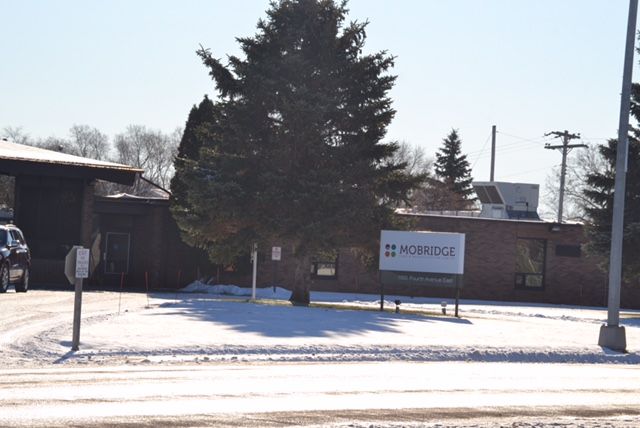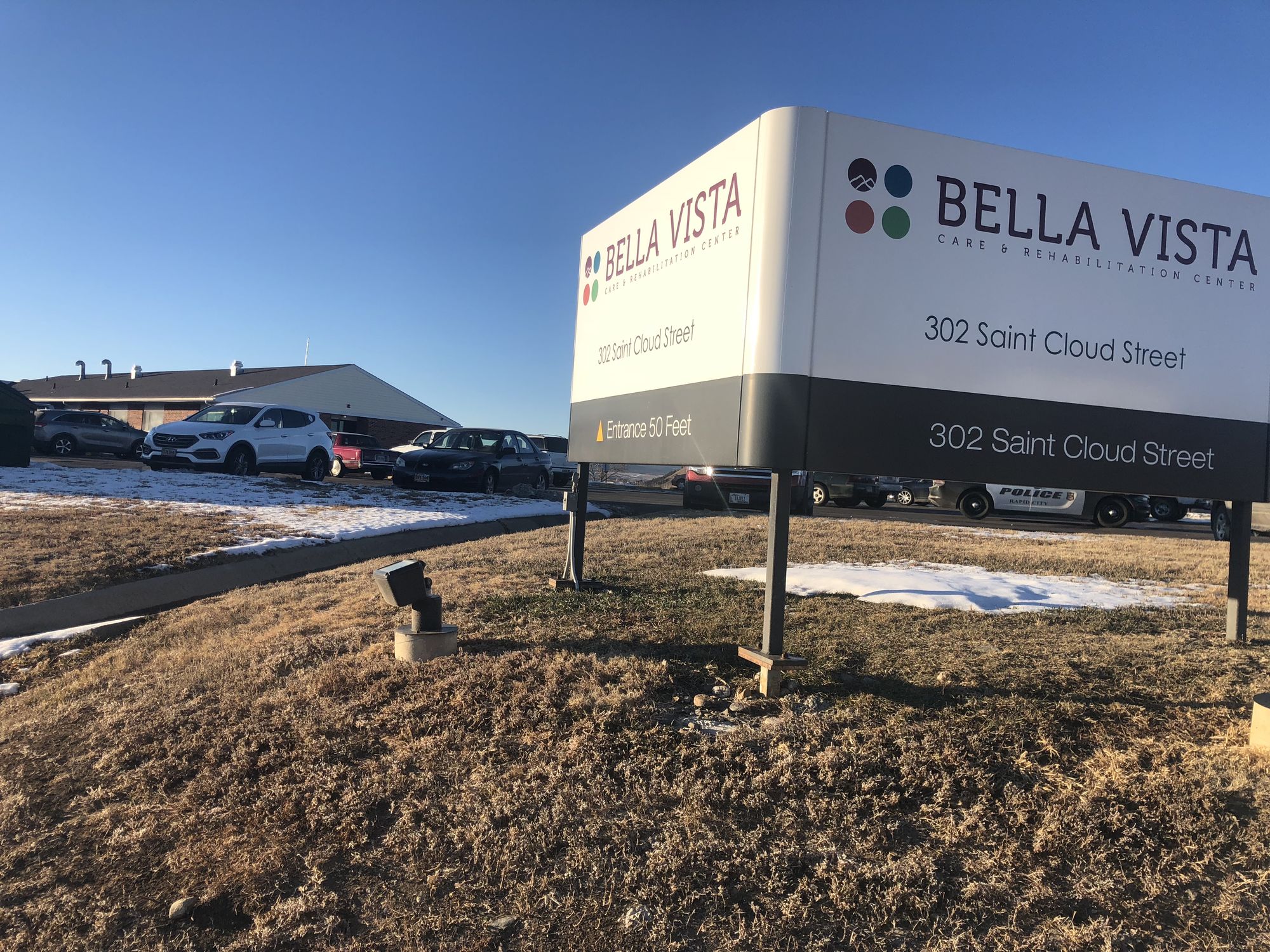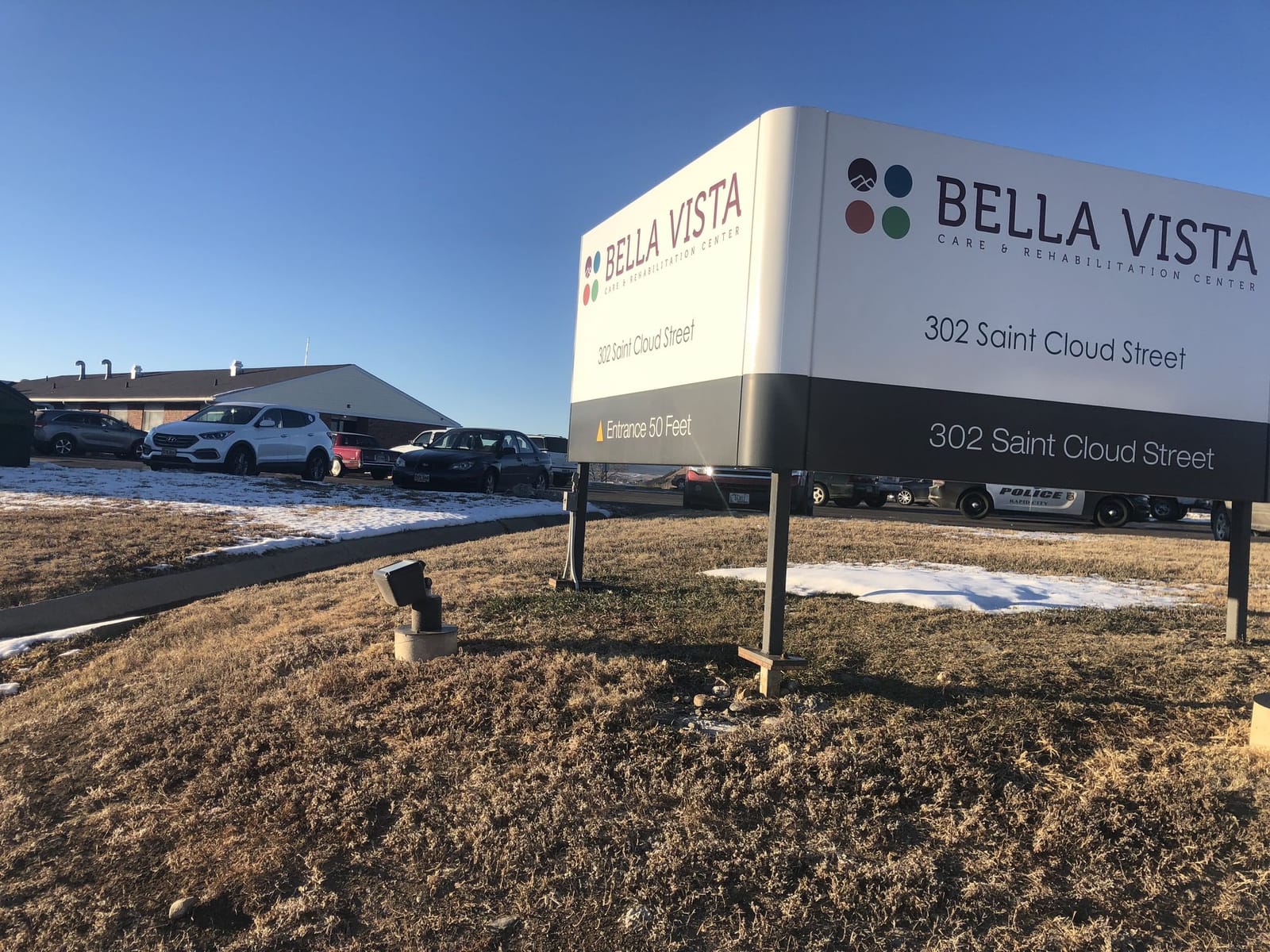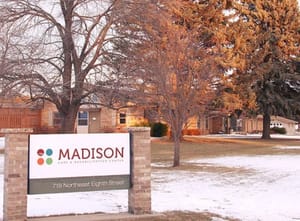The health and stability of some of South Dakota’s most vulnerable residents are being threatened by a wave of closures of long-term care facilities across the state.
Three nursing homes closed over the past three years and two more are slated for closure by February. Another 17 former Golden Living Centers are now being operated by a state-approved receivership created after the New Jersey firm running the homes went bankrupt.
The closures have occurred in small towns in South Dakota that have few or no options for relocation and are often many miles from another operating nursing home.
The recent nursing home closures in towns such as Tripp, Bryant and Rosholt and the likely closures in Madison and Mobridge have put a hardship on those towns and the people who live or work at the homes. Nursing homes are sometimes the biggest employer in small towns and employees are typically laid off upon closure. Residents of rural nursing homes tend to be locals and uprooting them from their long-term homes is physically and emotionally traumatic for the patients and their loved ones.
Several factors are leading to the closures: a low rate of per-patient payment to facilities that accept Medicaid and Medicare; rapidly increasing costs of skilled nursing care; a shortage of qualified employees in a field with generally low salaries; and a steady reduction in residents due to a “Baby Bust,” the term for a drop in the birth rate during and after the Great Depression in the 1920s and 1930s.
The inability of nursing homes – including both non-profit and for-profit facilities – to make money or even just stay afloat is causing a crisis of care for vulnerable state residents that could linger for generations, said Mark B. Deak, executive director of the South Dakota Health Care Association.
“I believe we really are at a pivotal place right now where we have to muster the will to do what needs to be done to take care of those who cannot take care of themselves,” Deak said. “It really is a crisis. When you have 18 nursing facilities in receivership, that’s never happened in the history of the state. You have two likely to close, and I don’t believe they will be the last; they may be just the tip of the iceberg.”

Lack of revenues put nursing home at risk
Deak and other experts say the primary cause of nursing home failures in South Dakota and across the United States is insufficient Medicaid payments to nursing facilities.
According to a recent study commissioned by the American Health Care Association in which 28 states supplied data, South Dakota had the lowest Medicaid reimbursement rate at just $131 per day. With the cost to house a patient estimated at $163 in South Dakota, nursing homes are losing $32 per day, per Medicaid patient, a total loss of about $39 million a year statewide.
Nursing homes typically survive by housing a mix of patients with differing abilities to pay. Losses from Medicaid patients are offset by higher rates paid by “private pay” patients who can afford to pay on their own or those with long-term care insurance.
In some areas, often those with higher populations and a broader mix of incomes, that system can work. But in rural South Dakota, some nursing homes have more than half of their patients on Medicaid, leading to financial challenges.
“In the nursing home space, there’s not as much private pay, so Medicaid and Medicare are major sources,” said Caroline Haarmann, vice president for Medicaid reimbursement and research at the American Health Care Association. “It speaks to the challenge that nursing centers face; they’re definitely on very thin margins.”
Nursing home numbers have been stable on the national level over the past decade, but some areas including in the Great Plains have seen losses and many rural nursing homes are struggling, said Beth Martino, senior vice president of public affairs for the American Health Care Association.
“Many skilled nursing centers across the country are struggling to keep their doors open. The closures and ownership changes that have occurred reflect that trend,” Martino wrote in an email. “Medicaid is drastically underfunded, and the margins for many centers are incredibly thin. We are reaching a point nationally where we have to find a way to pay for the care that seniors and individuals with disabilities need and deserve.”
South Dakota has about 110 nursing homes with roughly 6,800 beds. About 55 percent of nursing home patients in South Dakota are on Medicaid, according to the state Department of Social Services.
The average nursing home in South Dakota has a positive operating margin of only .7 percent, Deak said, which makes them highly vulnerable to market forces, government payment rates and unexpected facility costs.
Operating costs have continued to increase at nursing homes as patients live longer and encounter a greater need for more skilled care, such as for dementia or Alzheimer’s Disease or for patients with bariatric issues or traumatic brain injuries. The average cost to consumers for a nursing home bed ranges from about $7,000 to $9,000 a month in South Dakota, Deak said.
That figure, however, must cover the cost of 24-hour care, administration, facilities, food and other overhead costs, he said.
Staffing shortages are common in nursing homes, especially in rural towns with small employment pools. Certified nursing assistants, who do most of the hands-on care, make only about $12 an hour, which is comparable to some retail jobs.
While nursing homes in some areas have waiting lists, those in rural areas have too many openings. The long-term care industry expects admissions to rise in the coming decades as the “Silver Tsunami” of Baby Boomers reaches retirement.
One way the state could ease the burden on nursing homes would be to increase the Medicaid reimbursement rate, a cost split between the state and federal governments, but it will take more than that to ensure solvency of rural homes, said Ryan Cwach, a Democratic state representative-elect from Yankton.
Cwach, a lawyer who made nursing home funding a part of his campaign platform, said the Legislature needs to address comprehensive nursing home reform. For instance, Cwach said, the state Medicaid reimbursement level is based on a payment of 90 percent of the estimated daily nursing home cost from 2012, a figure that has certainly risen significantly since then.
Cwach pointed out that availability of one method of paying for nursing home care – long-term care insurance – is dwindling as insurers rapidly leave that market. Cwach said he represented a client at his law firm who didn’t qualify for the insurance because he had a knee replacement a decade ago and was considered too high-risk by insurers.
The number of private-pay nursing home residents who prop up the Medicaid and Medicare clients may continue to fall as private and non-profit providers develop more apartment-style long-term care facilities that are attractive to those who can afford to maintain their independence.
Those types of facilities are becoming more common in urban markets such as Sioux Falls and Rapid City, further sapping revenue from rural nursing homes.
“I think we need to step back and approach this with an open mind about other solutions that aren’t just fixing Medicaid reimbursement,” Cwach said. “It’s really a harsh, cruel system that we put on our elderly with the financial component of how we fund nursing homes.”
Outgoing Gov. Dennis Daugaard said in his recent 2019-20 budget address that the state is likely to see about $53 million in new spending in the coming year, including a 2.3 percent hike for Medicaid providers.
Deak said he will lobby lawmakers to use more of that money to boost Medicaid reimbursements for long-term care.
“The moral test of government is how we treat those in the dawn of life, our children, those in the shadows, the disabled, and those in the sunset of life, the elderly,” Deak said. “It really comes down to the equation: do we have the will to use the dollars we have available because the chronic underfunding of long-term care is coming home to roost.”
Nursing homes in financial trouble
This list includes the names of 18 South Dakota nursing homes and one assisted living facility that are under control of a financial receiver that intervened when Skyline Healthcare of New Jersey went bankrupt. The homes in Madison and Mobridge have been targeted for closure by the receiver, which has indicated that the entire group of facilities is in financial hardship.
- Arlington Care and Rehabilitation Center
- Armour Care and Rehabilitation Center
- Bella Vista Care and Rehabilitation Center (Rapid City)
- Black Hills Care and Rehabilitation Center (Rapid City)
- Clark Care and Rehabilitation Center
- Covington Care and Rehabilitation Center (Sioux Falls)
- Groton Care and Rehabilitation Center
- Ipswich Care and Rehabilitation Center
- Lake Norden Care and Rehabilitation Center
- Madison Care and Rehabilitation Center
- Meadowbrook Care and Rehabilitation Center (Rapid City)
- Milbank Care and Rehabilitation Center
- Mobridge Care and Rehabilitation Center
- Park Place Care and Rehabilitation Center (Milbank)
- Pierre Day Care and Rehabilitation Center
- Prairie Hills Care and Rehabilitation Center (Rapid City)
- Redfield Care and Rehabilitation Center
- Salem Care and Rehabilitation Center
- Watertown Care and Rehabilitation Center
Panic sets in for nursing administrator
In late April, nursing home administrator Debbie Menzenberg sent a series of urgent emails to South Dakota health officials. Menzenberg was in charge of 18 nursing homes and one assisted living center across the state on behalf of Skyline Healthcare, a New Jersey firm that in January 2017 had assumed management of the nursing facilities owned by Golden Living Centers.
That month, Skyline stopped paying its bills, and Menzenberg told state officials that a company official told her the company was bankrupt and that she should begin discharging residents.
Unpaid water bills at the Bella Vista and Prairie Hills homes in Rapid City resulted in a shut-off notice, Menzenberg wrote. Electric service was in jeopardy at the nursing home in Pierre for the same reason. Employees across the group had not been paid and lost their insurance coverage. The facilities only had enough housekeeping and laundry supplies for four more days of operation and food for residents for only five more days.
“Bottom line, the SD facilities are in harm’s way and all residents’ safety is at risk and will increase (in) risk every day,” Menzenberg wrote on April 28. “I NEED HELP!!!” she wrote two days later.
The emails were the opening salvo in a battle to maintain proper management over the struggling nursing homes run by Skyline. In early May, a state circuit judge in Pierre accepted a plan to create Black Hills Receiver, LLC, a firm that is now running the former Skyline nursing homes. The executive in charge of Black Hills Receiver is a former Golden Living Center official. The South Dakota Department of Health signed off on the receivership plan.
Based on court documents, it is clear the entire group of nursing homes is financially unstable. After running the homes since early May, the receiver petitioned the court in November to close the nursing homes in Mobridge and Madison. By law, residents must be given 60 days to vacate after the closures are finalized. The judge and department of health have given initial acceptance to the plan. A spokeswoman for Black Hills Receiver said a brief press release issued by the firm in May would be its only official comment.
In the Nov. 13 petition to close the two facilities, attorneys for the receiver said the Madison and Mobridge homes had to be closed because they expected a loss of nearly $1.2 million between the two from May through December. Furthermore, the petition notes that the facilities in receivership in total will likely lose $7.7 million by the end of 2018.
The petition includes ominous language for the other 17 homes. “The receivership as a whole is operating at a significant, and unsustainable, loss,” the petition states. “If not addressed in a timely manner, the unsustainable operational losses could result in issues not just at the facilities that have the biggest financial issues, but also across the receivership.”
Financial pressure is also being applied by MidCap Financial Services, a firm that said in court filings it is owed nearly $5 million in loans made to Skyline to run the nursing homes. The firm asserts that Black Hills Receiver is now responsible for the loans and argues that revenues from the nursing homes and value of property are being improperly used by the receiver to “prop up these failing operations” in South Dakota.
“Money to which MidCap is entitled continues to be used to fund failing operations for the sole purpose of preserving the value of plaintiffs’ real property,” the firm’s attorneys wrote in a November court filing. “The time for ‘patience’ has passed.”
In all, the 19 facilities in receivership have about 1,000 employees and roughly 900 residents. They are located in Arlington, Armour, Clark, Groton, Ipswich, Lake Norden, Madison, Milbank, Mobridge, Pierre, Rapid City, Redfield, Salem, Sioux Falls and Watertown.
A court hearing is set for Dec. 20 to finalize plans for closure of the Madison home with its roughly 50 beds and Mobridge facility with its roughly 90 beds.
A group of concerned officials is seeking to come up with a plan to save the facility in Mobridge, but the exodus of residents from the home in Madison is well underway, according to Mayor Roy Lindsay.
“People are feeling sorry for the residents and staff, and those who are directly affected are really under stress,” Lindsay said. “Where do I take mom or dad? How far away do they have to go? In all of them, you’re taking them away from their friends and family.”
Lindsay and others are also trying to determine what is next for the property and nursing home itself, both of which are still owned by Golden Living. He said private housing firms may be interested, and also thinks Dakota State University in Madison could take advantage of an opportunity to create new student housing.
The pending closure has had a negative ripple effect on the entire city, Lindsay said. “The stress has been detrimental to everyone.”

Closures hard on residents and communities
Nursing home closures can take a significant physical and emotional toll on residents, some of whom suffer what is known in scientific studies as “transfer trauma” or a mental condition known as “relocation stress syndrome.”
According to a study by Consumer Voice, a national advocacy group for residents of long-term care facilities, those conditions can cause displaced residents to become depressed, agitated, withdrawn, and lead to falls, weight loss or complacency about caring for themselves.
Guy Varud has seen this trauma up close over the past several weeks as he prepares to move out of the Madison Care and Rehabilitation Center, which is a former Golden Living Center facility slated to close by Jan. 31.
Varud, 76, is a retired financial manager from Sioux Falls who suffers immobility due to failed knee surgeries.
Many of his fellow residents are from Madison and receive regular visits from local family and friends, Varud said. A lot of tears have been shed as those residents prepare to move and they and their families begin to understand they may soon be separated by 40 miles or more.
“People cry on the way out; they sit at the tables and cry because they’re losing their home,” Varud said. “Some of staff cry when they see people leave. It’s happening every time you turn around, and it breaks you up.”
Varud has connections in Sioux Falls and the resources to find a nursing home bed there when the Madison home closes. He said about half of the home’s 50 or so residents have already moved out.
He expressed disappointment that the state Legislature has allowed Medicaid reimbursement rates to fall so low and that the Department of Health has not allowed more time for Madison officials to mitigate impacts of the closure or to find a way to keep the home open.
“To be thrown over the cliff like this is one of the most cruel things I’ve ever seen,” he said. “Many of these Medicaid people use to have substantial incomes, but due to difficulties in their life, mostly health issues, they’re on Medicaid, but they paid taxes all their life and they don’t deserve this.”
Varud, who serves on a patient leadership panel at the Madison nursing home, said he is also concerned that the receiver overseeing the troubled Golden Living Centers is trying to move displaced patients from Madison to other homes that are part of the 18 facilities being run by the receiver.
"It really is a crisis. When you have 18 nursing facilities in receivership, that's never happened in the history of the state. You have two likely to close, and I don't believe they will be the last; they may be just the tip of the iceberg." Mark B. Deak, South Dakota Health Care Association
One town saves its nursing home
Rumors of bad news began to swirl quickly throughout the town of Selby in early October: the Good Samaritan Center nursing home in the town of 625 people was being targeted for closure.
The facility was run by the Evangelical Lutheran Good Samaritan Society of Sioux Falls, a regional operator of nursing homes. Good Samaritan is based in Sioux Falls and runs housing and health care facilities, including nursing homes, in 23 states.
Like other nursing home operators, Good Sam has faced headwinds in trying to maintain viable homes, said Aaron Woods, director of corporate communications.
“The environment we operate in is undergoing a period of unprecedented transformational change,” Woods wrote in an email. “We are committed to the communities we serve and will continue to monitor how all our locations perform.”
The Selby nursing home, like a few in Nebraska that have been closed recently by Good Samaritan, was not deemed viable.
The news sent shock waves through the small town, which would have faced the relocation of about 45 residents and the loss of 50 jobs.
“The people living there would have been hurt the most,” said Dan Biel, a Selby insurance agent who is now the president of the non-profit Walworth County Care Center group formed to run the nursing home. “But trying to move a 90-year-old person, that would have been the hardest part.”
A public meeting was called and about 450 people showed up. The community rallied to save the nearly 60-year-old facility. After negotiations with Good Samaritan, which has agreed to donate the building to the new nonprofit, the fledgling group hired a management firm to handle operations and raised $400,000 in donations in less than two months to keep the nursing home operational. Donations came from a farmer who sold a load of grain on the group’s behalf, from events like a walleye fry and an auction with a comedic hypnotist, and from a business owner whose family members previously lived in the nursing home and gave a major gift of seed money.
Biel said the process has been a whirlwind but so far appears to have a happy ending. Though employees had to accept a lesser insurance plan, most have stayed on, he said. Biel believes that as a standalone institution and with local oversight, the facility can be run more efficiently and more cheaply than Good Samaritan was able to accomplish.
He said the goal is to simply operate the home without a loss and use the new capital reserves for backup only when necessary.
“Obviously people wouldn’t be closing nursing homes if they were making money,” he said. “So, our main goal is we’d be doing dang good if we just broke even.”
The nursing home opened under its new nonprofit ownership on Dec. 1 much to the relief of the residents of the home and the community as a whole.
“The staff has really pulled together and rooted for each other, and the residents are extremely pleased they don’t have to move,” Biel said, noting that one resident of the home is 103 years old.






